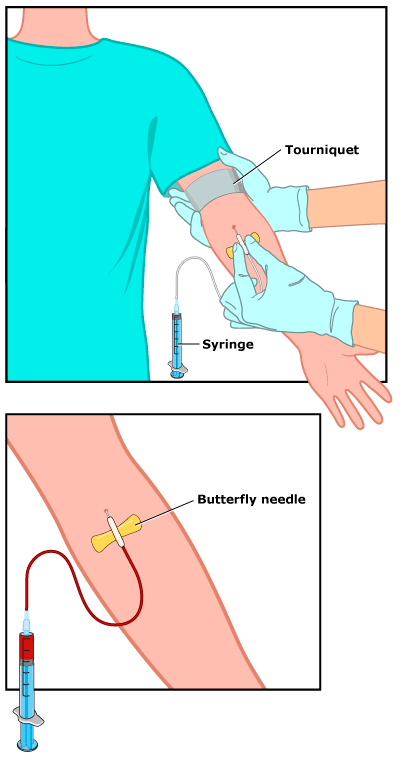Blood Test: Prolactin
Article Translations: (Spanish)
What It Is
Prolactin is a hormone produced by the pituitary gland, the pea-sized gland near the base of the brain that controls metabolism, growth, and sexual development. Although prolactin is produced in small amounts in both males and non-pregnant females, its main role is to stimulate lactation (milk production) in females during pregnancy and maintain milk supply during breastfeeding. A prolactin test measures the amount of this hormone in the bloodstream.
In a woman who breastfeeds, the nursing baby's demand for milk actually controls the mother's supply. When a baby sucks at the breast, the woman's pituitary gland releases more prolactin into her blood, increasing her milk production. If a mother doesn't breastfeed, her prolactin levels will return to normal shortly after giving birth.
Sometimes, though, prolactin levels are elevated even if a woman isn't pregnant or breastfeeding, or in a male. The most common cause is a prolactinoma, a usually benign (not cancerous) prolactin-producing tumor of the pituitary gland.
Why It's Done
Doctors may order prolactin tests to help diagnose, or monitor treatment of, prolactinoma. Symptoms of a prolactinoma include headaches, vision problems (if tumor growth is causing pressure on an optic nerve), and galactorrhea (milk production outside pregnancy or breastfeeding, or in a male).
The prolactin test also may be used as part of a work-up for irregular menstrual periods, fertility problems, some types of thyroid or adrenal gland dysfunction, anorexia, and polycystic ovarian syndrome.
All these conditions can be associated with altered prolactin levels. A number of medications and drugs can also stimulate the pituitary gland to release more prolactin into the blood.
Preparation
No special preparations are needed for this test. However, since prolactin levels vary throughout the day and night — they're highest during sleep, just after waking up, following strenuous exercise, and during periods of emotional stress — your doctor may request that the test be performed at a certain time of day (often a few hours after waking up). You also should be sure that the doctor knows about any medications or drugs your child may be taking, since some may increase prolactin levels in the blood.
It may help to have your child wear a T-shirt or short-sleeved shirt on the day of the test to make things faster and easier for the technician who will be drawing the blood.
The Procedure
A health professional will draw the blood from a vein after cleaning the skin surface with antiseptic and placing an elastic band (tourniquet) around the upper arm to apply pressure and cause the veins to swell with blood. A needle is inserted into a vein (usually in the arm inside of the elbow or on the back of the hand) and blood is withdrawn and collected in a vial or syringe.
After the procedure, the elastic band is removed. Once the blood has been collected, the needle is removed and the area is covered with cotton or a bandage to stop the bleeding. Collecting the blood for the test will only take a few minutes.

What to Expect
Collecting a blood sample is only temporarily uncomfortable and can feel like a quick pinprick. Afterward, there may be some mild bruising, which should go away in a day or so.
Getting the Results
The blood sample will be processed by a machine. The results are commonly available in 1-2 days.
Risks
The prolactin test is considered a safe procedure. However, as with many medical tests, some problems can occur with having blood drawn, including:
- fainting or feeling lightheaded
- hematoma (blood accumulating under the skin causing a lump or bruise)
- pain associated with multiple punctures to locate a vein
Helping Your Child
Having a blood test is relatively painless. Still, many children are afraid of needles. Explaining the test in terms your child can understand might help ease some of the fear.
Allow your child to ask the technician any questions he or she might have. Tell your child to try to relax and stay still during the procedure, as tensing muscles and moving can make it harder and more painful to draw blood. It also may help if your child looks away when the needle is being inserted into the skin.
If You Have Questions
If you have questions about the prolactin test, speak with your doctor. You can also talk to the technician before the procedure.
Note: All information is for educational purposes only. For specific medical advice, diagnoses, and treatment, consult your doctor.
© 1995-2024 KidsHealth ® All rights reserved. Images provided by iStock, Getty Images, Corbis, Veer, Science Photo Library, Science Source Images, Shutterstock, and Clipart.com

